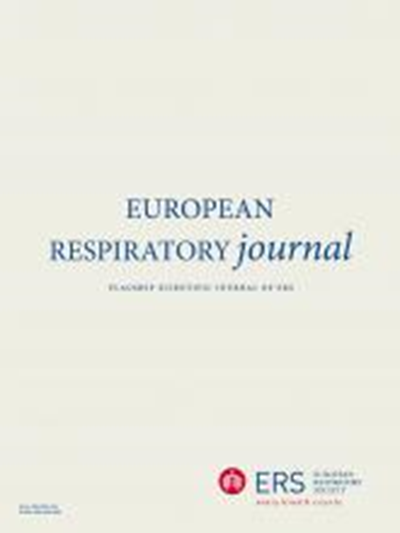中性粒细胞衍生的生物标志物在支气管扩张:确定一个共同的治疗靶点。
IF 16.6
1区 医学
Q1 RESPIRATORY SYSTEM
引用次数: 0
摘要
支气管扩张是一种慢性呼吸系统疾病,可导致肺功能显著下降,最终导致发病率和死亡率显著增加。尽管支气管扩张的全球影响越来越大,但目前尚无针对该疾病的特异性(或许可的)治疗方法,大多数可用的治疗方法虽然有益,但侧重于症状管理和感染控制。在某种程度上,支气管扩张缺乏特异性治疗可能是由于缺乏确定的疾病生物标志物。由于支气管扩张在临床表现上差异很大,并且可以由各种病因引起,因此建立有效的生物标志物已被证明具有挑战性。然而,确定支气管扩张的关键生物标志物对于制定适当的诊断和管理计划以及测量对治疗的有效反应至关重要。虽然支气管扩张有许多潜在的生物标志物,但几乎所有的支气管扩张病例都以慢性中性粒细胞炎症为基础。中性粒细胞丝氨酸蛋白酶(NSPs)及其内源性抑制剂的失衡与支气管扩张中经常观察到的肺破坏、粘膜相关缺陷、感染和临床结果恶化密切相关。在这篇综述中,我们讨论了与支气管扩张相关的各种生物标志物,特别关注NSPs作为支气管扩张中最有效的生物标志物,因为它们在疾病的发病机制中起着显著的作用。最后,我们探讨了旨在降低支气管扩张NSP活性的潜在治疗方法,表明迄今为止,间接抑制NSP似乎是最有效地解决支气管扩张慢性中性粒细胞炎症的策略。本文章由计算机程序翻译,如有差异,请以英文原文为准。
Neutrophil-derived biomarkers in bronchiectasis: identifying a common therapeutic target.
Bronchiectasis is a chronic respiratory disease that can lead to a substantial decline in lung function, ultimately leading to a significantly increased risk of morbidity and mortality. Despite the increasing global impact of bronchiectasis, no specific (or licensed) treatment for the disease currently exists, with most available therapies, though beneficial, focusing on symptom management and infection control. In part, the lack of specific treatments for bronchiectasis may be due to a lack of established biomarkers for the disease. Because bronchiectasis varies so widely in its clinical presentation and can be caused by various aetiologies, the establishment of validated biomarkers has proven challenging. However, identifying key biomarkers in bronchiectasis is crucial to developing appropriate diagnosis and management plans, as well as to measuring effective responses to treatment. While there is a multitude of potential biomarkers in bronchiectasis, almost all instances of bronchiectasis are underpinned by chronic neutrophilic inflammation. The imbalance in neutrophil serine proteases (NSPs) and their endogenous inhibitors has been strongly linked to the lung destruction, mucosal-related defects, infection and worsening of clinical outcomes that are frequently observed in bronchiectasis. In this review, we discuss the various biomarkers linked to bronchiectasis, with a specific focus on NSPs as the most validated biomarkers in bronchiectasis, given their marked role in the pathogenesis of the disease. Lastly, we touch on potential therapeutic approaches aimed at reducing NSP activity in bronchiectasis, showing that, to date, indirect NSP inhibition appears to be the strategy that most effectively addresses chronic neutrophilic inflammation in bronchiectasis.
求助全文
通过发布文献求助,成功后即可免费获取论文全文。
去求助
来源期刊

European Respiratory Journal
医学-呼吸系统
CiteScore
27.50
自引率
3.30%
发文量
345
审稿时长
2-4 weeks
期刊介绍:
The European Respiratory Journal (ERJ) is the flagship journal of the European Respiratory Society. It has a current impact factor of 24.9. The journal covers various aspects of adult and paediatric respiratory medicine, including cell biology, epidemiology, immunology, oncology, pathophysiology, imaging, occupational medicine, intensive care, sleep medicine, and thoracic surgery. In addition to original research material, the ERJ publishes editorial commentaries, reviews, short research letters, and correspondence to the editor. The articles are published continuously and collected into 12 monthly issues in two volumes per year.
 求助内容:
求助内容: 应助结果提醒方式:
应助结果提醒方式:


